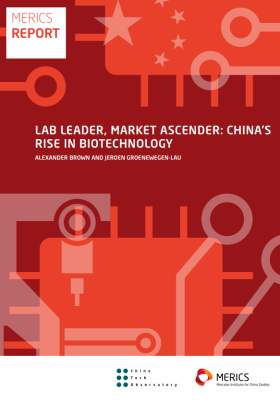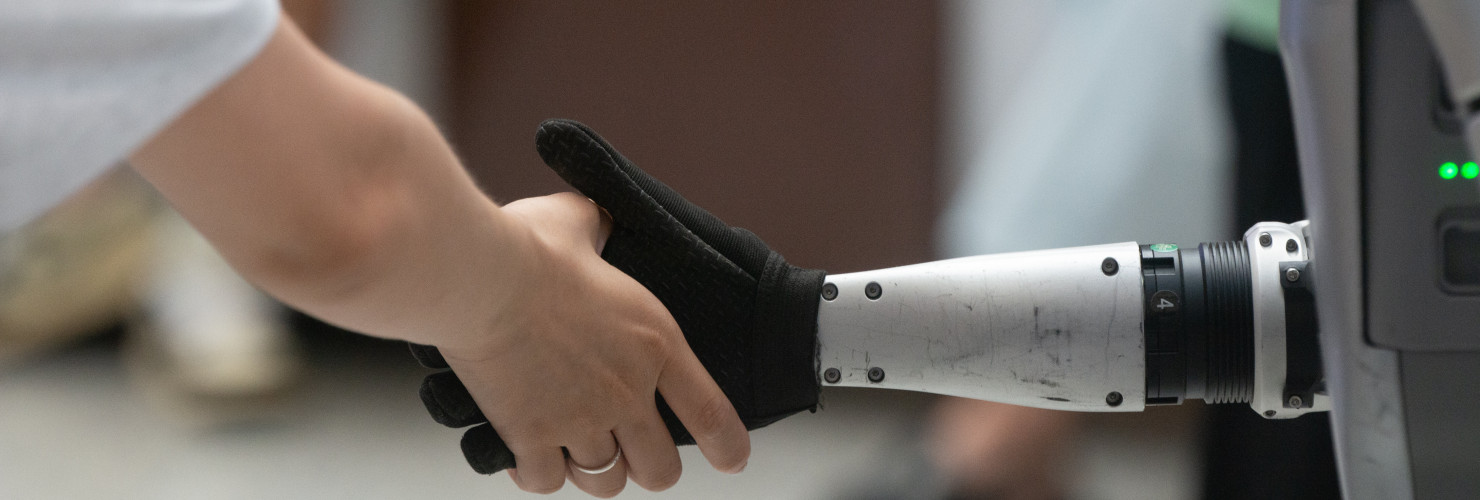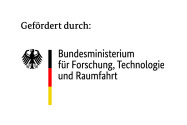

China’s “AI+” drive aims for integration across sectors: a wake-up call for Europe
From solar panels to electric vehicles, Beijing has outpaced rivals before. Wendy Chang says its latest push to spread the use of Artificial Intelligence (AI) could now threaten other European strengths, like industrial automation.
The Chinese government has started a major push to spread the use of Artificial Intelligence (AI) widely across industries, schools and other public institutions – a development European governments and companies should monitor closely. The ambitious “AI+” initiative, published by the State Council late August, aims to upgrade existing sectors, spur new products and services, and reshape the way Chinese cities are run. It envisions the penetration of AI-powered “intelligent terminals” and AI agents to exceed 70 percent across key sectors by 2027, with a vibrant AI industry that is well integrated across China’s economy and society.
Beijing’s focus on practical AI applications reflects its long-standing policy direction. Even if China trails the West in cutting-edge AI and continues to struggle to secure high-quality AI chips, it could still leap ahead in using AI in several fields and in overall adoption across society. Defining AI broadly, Chinese policy extends beyond content-generating large language models to include industrial tools like robotic arms, automation software, integrated smart city solutions, and advanced equipment in emerging fields like the low earth orbit economy; consumer products like smart cars, humanoid robots and wearables; and services like e-commerce, transportation, housekeeping, elderly care and childcare.
A rapid, large-scale adoption of AI across industries and society could give China an edge in areas where Europe has traditionally excelled, like industrial automation. The country already surpasses Germany and Japan in the ratio of factory robots to manufacturing workers. In 2023, new robot installations in Chinese manufacturing accounted for over half of the world’s total, many made domestically. This volume allows Chinese robot makers to allocate larger research and development (R&D) budgets to develop AI-assisted smart robots and quickly install them nationwide. Foreign companies operating in China may be compelled to adopt Chinese systems and technologies over time, especially if there are no competitive foreign alternatives.
Policy and scale could broaden China’s industrial leadership
China’s “grand steering” approach, which combines industrial policy with strong state direction to shape the economy, has proven highly successful in solar panels and other green tech, telecoms, high-speed rail, and electric vehicles. It knows how to implement ambitious plans. Some provincial governments have already released versions of “AI+”. The Shanghai municipal government, for example, intends to create a whole ecosystem of AI industries by providing subsidies of 900 million CNY (108 million EUR) for access to computing clusters, AI models, and model-training data, and additional subsidies of up to 500 million CNY over three to five years for local companies that develop innovations in AI.
During this year’s World AI Conference (WAIC), an annual marquee event which Chinese companies use to showcase their advances, the government highlighted AI projects already underway by releasing a list of 40 “strategic high-value scenarios” in key state-owned enterprises. Alongside communications, mining, and agriculture applications, these included fatigue-damage detection in China’s C919 jetliner for the Aviation Industry Corporation of China, inspection and operations systems for power lines for the State Grid, and the simulation of high-speed train aerodynamics for rolling-stock company CRRC.
The "AI+" policy calls for the creation of “pilot platforms” in key sectors such as manufacturing, medicine, transportation, finance, and energy. Shanghai’s renowned Zhongshan Hospital, for example, is developing a medical AI pilot to promote the use of AI in healthcare nationwide. It plans to use Chinese hardware and software to build AI computing infrastructure capable of securing medical data, then create a platform to develop AI models and agents for 50 medical applications covering medical research, intelligent diagnosis, and medical equipment, including robots. One of these is a healthcare management system that uses the population’s health data to provide lifelong health monitoring and administrative services.
Policy and scale could see China setting AI norms and standards
China’s tech sector is also responding. Companies are channeling the power of large general-purpose AI models such as DeepSeek to focus on sector- and task-specific use cases: Startups are developing applications to automate airport parking, support English learning, and help doctors with routine tasks; companies targeting the public sector are building robot police dogs and city monitoring solutions; and Big Tech is aiming even bigger – Baidu’s AI Cloud collaborates with 65 percent of state-owned enterprises to streamline processes, while Huawei is leveraging its industrial data infrastructure through its FusionPlant platform to develop industrial AI solutions.
This full-force approach to jumpstarting industries has served China well in many sectors, but it does have downsides – subsidies can lead to corruption and market inefficiencies, competition among provinces pursuing the same goals can result in wasted resources through duplicated efforts, leading to overcapacities and price wars. But these periods of fierce competition have also produced many winning corporations that dominate both domestic and foreign markets. The push to incorporate AI widely could similarly result in products and services – and, with them, norms and standards – that impact not only China but also the rest of the world for years to come.
China is pursuing a leading role in global AI governance and development. Premier Li Qiang used the WAIC to announce China’s Action Plan for Global AI Governance just days after the US presented its AI Action Plan. Stressing the need for collaboration, he sent a message of inclusion especially to countries in the Global South. Once its "AI+" plan starts producing competitive products and services, China could export them to like-minded countries around the world. This could forge a large technology bloc dominated by Chinese AI that draws strength from its leading position in many sectors. Europe must act now to invest in AI development, to stay in control of its own technological future.

